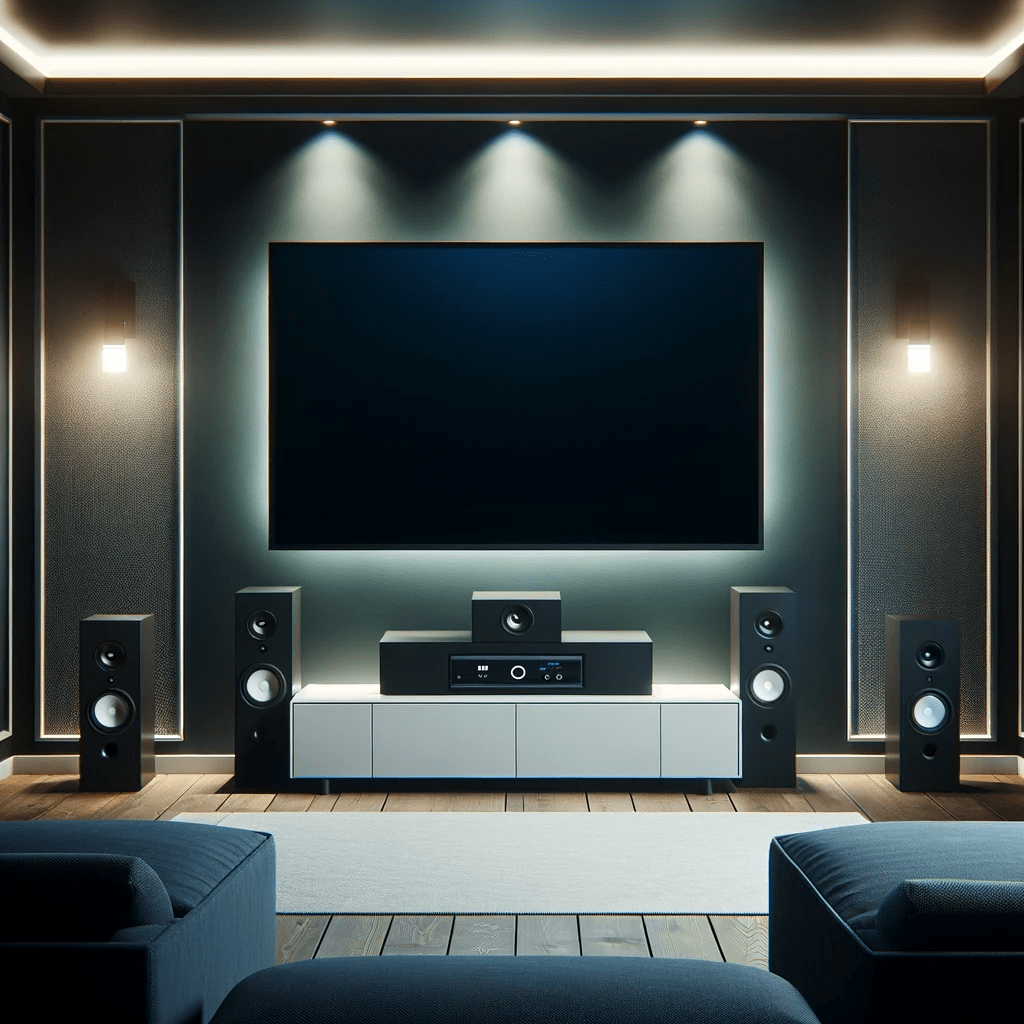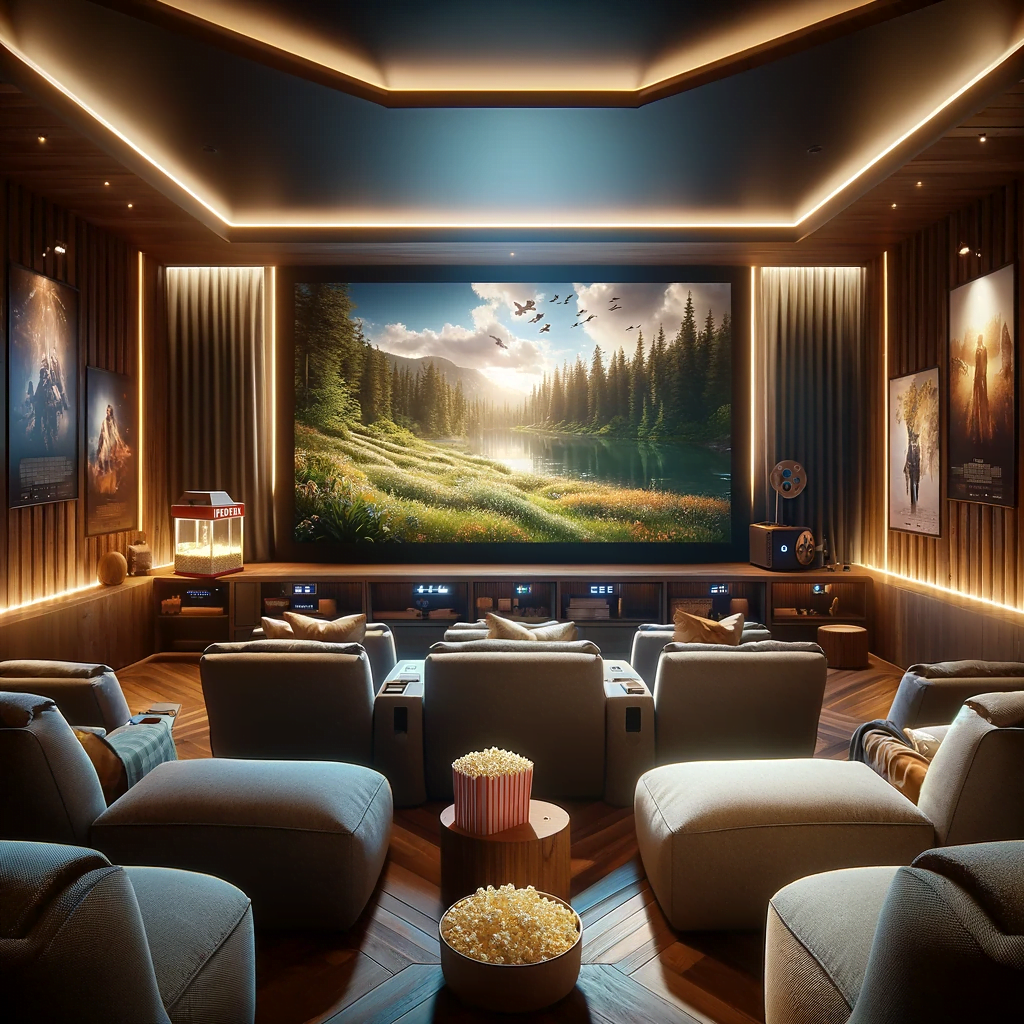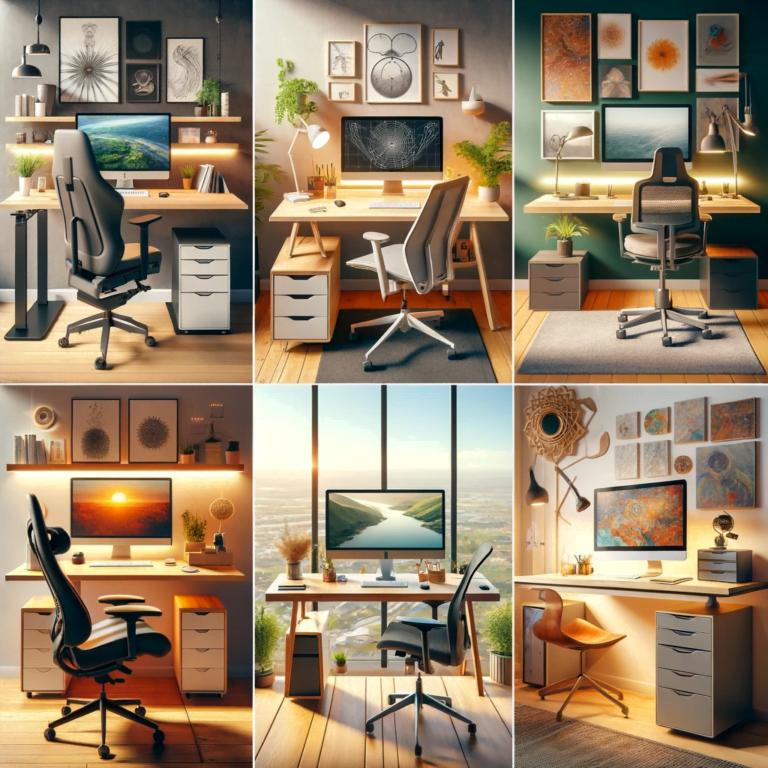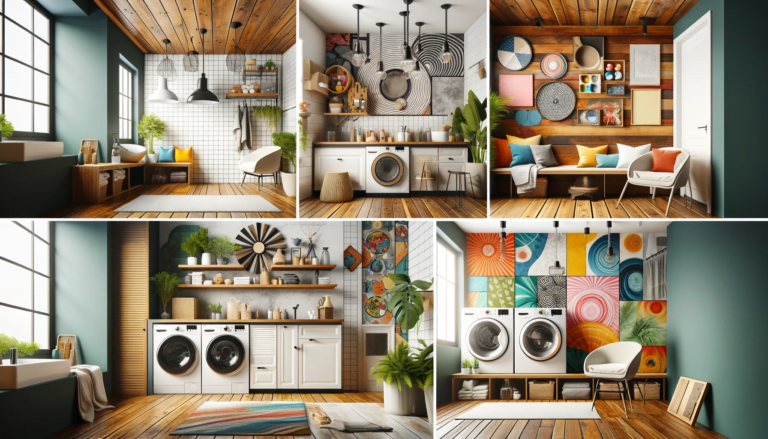Home Theater Design: Creating Your Dream Entertainment Space
“This may include an affiliate links that costs you nothing.”
Table of Contents
In today’s fast-paced world, the importance of having a relaxing and immersive entertainment space within your home cannot be overstated. A well-equipped home theater design provides the perfect escape from the everyday hustle and bustle, offering an unparalleled cinematic experience in the comfort of your own home. Whether you’re a movie buff, a sports enthusiast, or a gaming aficionado, creating the best home theater design is a worthwhile investment that can transform your living space. This may include a 4K Blu-ray player, streaming device (e.g., Apple TV, Roku, or Amazon Fire TV), and a gaming console (e.g., Xbox or PlayStation). In this comprehensive guide, we’ll explore the key elements of designing the perfect home theater and provide you with a table of essential devices and equipment to bring your vision to life.
The Essentials of Home Theater Design
Table of Home Theater Devices and Equipment
|
Category |
Device/Equipment |
Purpose |
|---|---|---|
|
Video |
Projector |
Displays visuals on the screen |
|
Screen |
Provides a surface for projection | |
|
4K Blu-ray Player |
Plays high-definition content | |
|
Streaming Device |
Streams online content | |
|
Gaming Console |
Allows gaming | |
|
Audio |
Surround Sound Speakers |
Delivers immersive audio |
|
Receiver |
Amplifies and distributes audio | |
|
Subwoofer |
Produces deep bass sounds | |
|
Seating |
Home Theater Seating |
Provides comfortable seating |
|
Lighting |
Dimmable Lights |
Controls room lighting |
|
Blackout Curtains/Shades |
Blocks external light | |
|
Acoustics |
Acoustic Panels |
Improves sound quality |
|
Bass Traps |
Minimizes bass resonance | |
|
Diffusers |
Enhances sound diffusion | |
|
Control |
Universal Remote Control |
Manages various devices |
|
Smart Home Automation System |
Integrates with other systems | |
|
Decor |
Wall Coverings |
Enhances aesthetics |
|
Furniture |
Complements the theme | |
|
Cable Management |
Cable Concealment |
Organizes cables |
|
In-Wall Wiring |
Hides cables in the wall |
Designing the best home theater is a rewarding endeavor that can provide years of entertainment and enjoyment for you, your family, and your friends. By carefully considering room layout, audio-visual equipment, seating, lighting, acoustics, and decor, you can create a truly immersive cinematic experience in your own home. Use the table of devices and equipment provided as a starting point to plan and build your dream home theater. With the right design and equipment, your home theater will become the ultimate entertainment destination.
Room Selection and Layout:
Dedicated Space:
Your home theater should be in a dedicated room or area of your home. This helps in controlling ambient light and noise, ensuring a better viewing and listening experience.
Minimal Natural Light:
Choose a room with minimal natural light. If windows are present, consider using blackout curtains or shades to block out light completely during viewing.
Room Dimensions:
The dimensions of your room can affect the sound and viewing experience. Rectangular rooms often work well for home theaters.
Screen and Projector:

Screen Size:

The screen size should be chosen based on the room’s dimensions and seating arrangement. It’s essential to find the right balance so that every seat offers an optimal viewing angle. you can also calculate screen view distance.
Projector Quality:
Invest in a high-quality projectors that can deliver sharp and vibrant images. Consider factors like resolution (e.g., 4K), lumens (brightness), and technology (LCD, DLP, or laser) when selecting a projector.
Here’s a table providing a general screen distance guide to help you determine the ideal viewing distance based on your screen’s size. Keep in mind that these are approximate guidelines, and personal preferences may vary:
|
Screen Size (inches) |
Minimum Viewing Distance (feet) |
Maximum Viewing Distance (feet) |
|---|---|---|
|
32 |
4.0 |
6.7 |
|
40 |
5.0 |
8.3 |
|
50 |
6.3 |
10.4 |
|
55 |
6.9 |
11.5 |
|
60 |
7.5 |
12.5 |
|
65 |
8.1 |
13.5 |
|
70 |
8.8 |
14.7 |
|
75 |
9.4 |
15.8 |
|
80 |
10.0 |
16.8 |
|
85 |
10.6 |
17.8 |
|
90 |
11.3 |
18.9 |
|
100 |
12.5 |
20.8 |
These distances provide a balance between immersive viewing and comfortable eye strain prevention. However, personal preferences, room size, and the specific resolution of your screen can all influence the ideal viewing distance. For the best experience, consider factors like screen resolution (e.g., 4K, 8K), your eyesight, and the content you plan to watch when determining your actual seating arrangement in your home theater
Audio System:

Surround Sound:
The heart of your home theater experience lies in the audio system. Surround sound setups, such as 5.1, 7.1, or 9.1, create a three-dimensional audio environment, immersing you in the action on the screen.
Speaker Quality:
Choose high-quality speakers for clear and crisp sound reproduction. Floor-standing speakers, bookshelf speakers, and in-ceiling speakers can all have a place in your setup.
Receiver and Amplification:
A quality audio receiver acts as the central hub for your audio sources and amplifies the sound. Make sure it’s compatible with your speaker setup.
Table for a sound guide:
Creating a table for a sound guide is a bit more complex because sound quality and preferences can vary significantly based on individual tastes, room acoustics, and speaker specifications. However, I can provide a basic reference table that gives you an idea of speaker placement and volume settings for different activities:
|
Activity |
Speaker Placement |
Recommended Volume Level |
|---|---|---|
|
Watching Movies |
Front speakers (left, center, right), rear surrounds |
Moderate to high volume |
|
Subwoofer |
(Adjust to taste) | |
|
Center speaker (dialogue) |
Slightly louder than other | |
|
speakers | ||
|
Listening to Music |
Front speakers (left and right) |
Moderate to high volume |
|
Subwoofer (if available) |
(Adjust to taste) | |
|
Surround speakers (optional) |
Lower volume for ambiance | |
|
Playing Games |
Front speakers (left and right) |
Moderate volume |
|
Center speaker (for in-game dialogue) |
Slightly louder than | |
|
other speakers | ||
|
Hosting Parties |
All speakers (including surrounds) |
Higher volume for party |
|
Subwoofer (to add depth) |
atmosphere | |
|
(Adjust to taste) | ||
|
Late-Night Viewing |
Front speakers (left and right) |
Lower volume to avoid |
|
Center speaker (for dialogue) |
disturbing others | |
|
Quiet Background |
Selective speakers (e.g., just the fronts) |
Low volume |
|
Listening |
Keep in mind that these are general recommendations, and your specific speaker system, room acoustics, and personal preferences will influence your ideal sound setup. Additionally, many AV receivers have automated calibration systems that can help you fine-tune your audio settings for your specific room and speaker configuration.
Seating and Comfort:

Home Theater Seating:
Comfortable seating is crucial for a pleasurable viewing experience. Consider recliners or theater-style seating with cup holders and storage for a cinematic feel.
Seating Placement:
Ensure that seats are arranged so that every viewer has an unobstructed view of the screen. Risers can be used to elevate rear rows for better visibility.
Lighting Control:

Dimmable Lighting:
Install dimmable lighting to create the right ambiance. You can dim the lights during movies and brighten them when needed.
Smart Lighting:
Consider a smart lighting control system that can be programmed to set different lighting scenes for various activities like movie nights, gaming, or social gatherings.
Acoustic Treatment:
Acoustic Panels:
These panels improve sound quality by absorbing sound reflections and reducing echo, making dialogues and effects clearer.
Bass Traps:
Bass traps are essential for managing low-frequency sound waves and minimizing “boomy” sound in your room.
Soundproofing:
Proper soundproofing materials and techniques can prevent sound from escaping the room and external noise from entering.
Control System:
A user-friendly control system, such as a universal remote or a smart home automation system, makes it easy to manage all your devices from one central interface.
Voice Control:
Consider integrating voice control options like Amazon Alexa or Google Assistant for added convenience.
Decor and Aesthetics:
Choose a theme or decor style that suits your taste and complements the cinematic experience you want to create. Boho Style theater decor or a modern, minimalist look are popular choices.
Use sound-absorbing materials for wall coverings and furniture upholstery to enhance both aesthetics and sound quality.
Cable Management:
Plan for cable concealment to maintain a clean and organized look. In-wall wiring and cable channels can help hide cables and wires, preventing clutter.
By paying attention to these essential elements, you can design a home theater that not only looks impressive but also delivers a truly immersive entertainment experience for you and your guests. Each detail contributes to creating a space where you can enjoy movies, TV shows, games, and music to the fullest.
Finally
Designing a home theater that offers a truly immersive entertainment experience involves careful consideration of various elements, from room selection and layout to audio and video equipment, seating, lighting, acoustics, and decor. Each of these components plays a crucial role in creating a space where you can escape into the world of movies, games, or music, all while enjoying the comforts of your own home.
Remember that there’s no one-size-fits-all approach to home theater design. Your choices should reflect your personal preferences, the available space, and your budget. It’s essential to strike a balance between aesthetics and functionality, ensuring that your home theater not only looks impressive but also delivers top-notch audio and video quality.
As technology continues to evolve, new possibilities for home entertainment arise. Stay updated on the latest innovations and consider incorporating them into your home theater setup to keep it at the cutting edge. Whether you’re a cinephile, a gamer, or simply seeking a space for family gatherings, a well-designed home theater can be a source of joy and relaxation for years to come.
With the right planning and equipment, your home theater will be more than just a room; it will be a gateway to unforgettable experiences, bringing the magic of the big screen right to your doorstep. So, take your time, make informed choices, and create the home theater of your dreams. Enjoy the show
What Kind of Speakers Should I Use?
It’s recommended to use speakers specifically designed for home theater use, which include Dolby Atmos technology. However, with a quality AV receiver, you can use practically any type of speaker.
How Many Speakers Do I Need?
For a traditional surround sound system, at least five speakers are needed. Dolby Atmos-enabled setups might also include two overhead or in-ceiling speakers. The number of speakers can vary depending on space and budget, with options for 5, 7, or 9 principal speakers.
What Is the Best Speaker Setup?
A basic surround sound setup includes two front speakers on either side of the screen, a central speaker, two surround speakers behind the viewer, and one subwoofer. Additional speakers can be added for larger rooms or for enhanced immersive experiences with formats like Dolby Atmos.
What Kind of Seating Is Best for a Home Theater?
Comfortable seating is crucial. Options range from large plush couches to modern leather recliners, depending on the room size and screen dimensions.
Where Can You Find a Home Theater Screen?
Top-of-the-line screen manufacturers often work with dealers to ensure the right screen is installed according to room dimensions and ambient lighting
Where Should I Place My Popcorn Machine?
Ideally, the popcorn machine should be placed in the back, near the entrance, for easy access without disturbing others.
How to Set Up Audio Components?
Avoid rooms where all walls are the same length. Place the screen and front speakers on one of the narrower walls. Rear-surround speakers should be mounted on side walls just behind the main listening position.







Thanks for sharing. I read many of your blog posts, cool, your blog is very good.
Thank you for your sharing. I am worried that I lack creative ideas. It is your article that makes me full of hope. Thank you. But, I have a question, can you help me?
Thank you for your sharing. I am worried that I lack creative ideas. It is your article that makes me full of hope. Thank you. But, I have a question, can you help me?